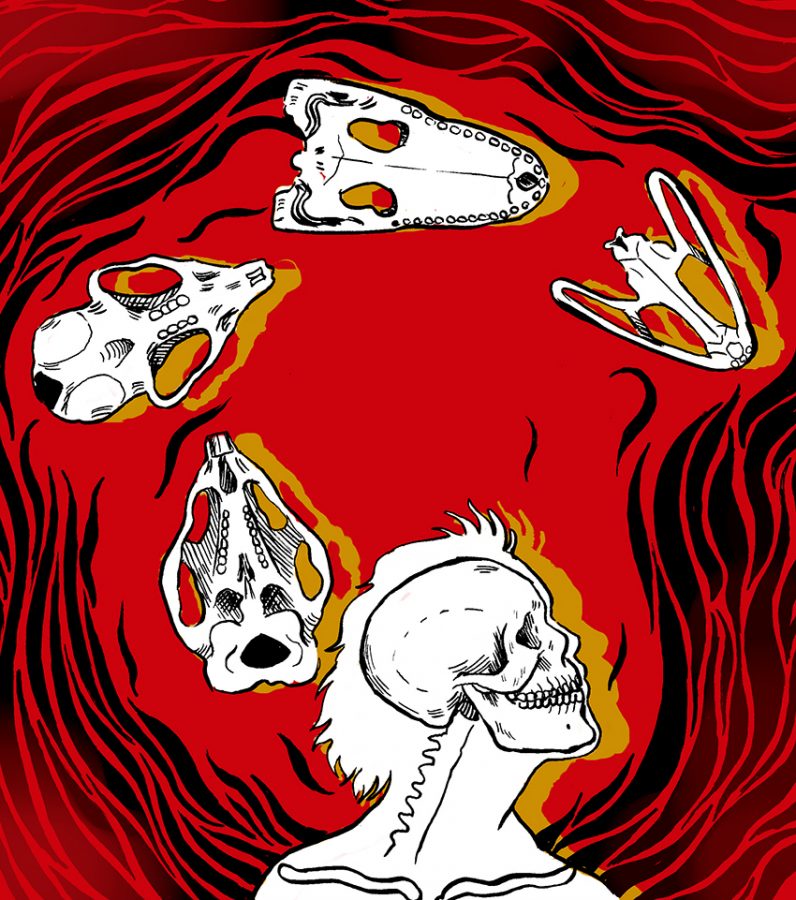UT Austin anthropologists recently took another step in discovering how humans evolved from primates.
Anthropology professor Chris Kirk and Gabrielle Russo, a UT anthropology alumna and assistant professor at Stony Brook University, used comparative data from multiple mammal species to show that walking on two feet is linked to a forward-shifted hole at the base of the brain through which the spinal cord exits the skull, called a foramen magnum.
The two published their findings in the Journal of Human Evolution last month.
“One of the things that sets humans apart from all other primates and most mammals is the fact that we are bipedal, that we can walk on two feet,” said Kirk.
In the 1800s, before Darwin’s theory of evolution was developed, anatomists studying the differences between humans and primates realized this hole was shifted forward in humans compared to primates and other mammals.
However, Kirk said this theory has caused controversy among anthropologists and scientists who believe only using the position of the foramen magnum is not enough evidence to differentiate humans from primates.
In the early 2000s, archaeologists found a 7-million-year-old distorted cranium skull fossil from a Sahelanthropus, an early species related to humans.
“When this cranium was undistorted by a CT scan and all the pieces were fit together, there was clearly a forward-shifted foramen magnum,” said Kirk.
Because this fossil is older and so close to the point when humans and chimpanzees became separate species, it caused even more controversy, Kirk said.
This prompted Kirk and then graduate student Russo to try to understand the evolution of the foramen magnum positions from a different perspective. He said looking at holes at the base of mammals’ skulls other than humans who also could walk on two feet, allowed them to finally link the two evolutionary phenomena together.
“What we wanted to see was that every time you look at a group that contains both (four-legged species) and (two-legged species), you see the same forward shift of the foramen magnum (in two-legged species only),” said Kirk. “That’s exactly what we found.”
The forward-shifted foramen magnum from the skull of the Sahelanthropus, one of the oldest known fossils, implies that bipedalism is an adaptation that distinguishes humans from other primates, Kirk said.
“This really argues that bipedalism goes back to the root of the human,” Kirk said. “It is one of the definitive adaptations that makes us human.”












